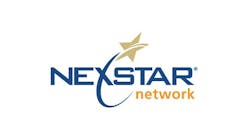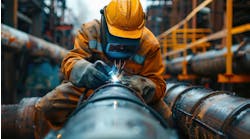Latest from Management
Have We Reached Critical Mass in the Trades?
Sponsored
If you know who Bob Dylan is, you might remember his Subterranean Homesick Blues. There is a line in that song that goes, “you don’t have to be a weather man to know which way the wind blows.” That line, in addition to sparking a radical underground group in the 1960s, seems prescient today.
We are getting ready to close the books on 2020. For most of us, it’s good riddance! While the quadrennial political storm might have been expected—and was actually eagerly anticipated by some—the Wuhan Flu, George Floyd and everything that those two events brought with them were not.
Those events have combined to do to America what China, the EU and Russia could not; they, quite literally, halted the greatest economic engine the world has ever known. That is not hyperbole. That is a fact. Yet, for all of the devastation, American resilience in the face of adversity shines through.
While not back to 100 percent of our pre-Wuhan numbers, construction employment across the board has rebounded. Residential construction starts have increased, as have the residential sectors of the market. We have actually surpassed our residential starts at this time in 2019. Re-hires and new first-time hires are within about 15,000 of last year’s totals, nationwide.
The need for residential housing, record low mortgage rates (and, of course, developers to develop subdivisions) is ever present and will only stay stalled for so long, absent a full-blown depression. The real impact of the Wuhan pandemic seems to be in the commercial construction and remodel areas.
The result of both the pandemic, and the riots, occurring across the country is that they have driven many people who are able to work remotely to do so. Employers are finding out that, with the inception of things like ZOOM and other social media software, their critical employees are more productive when working outside of the office environment and can still be a part of the virtual office world when required.
The employees, naturally, are loving not having to get up, dress up, drive, fly or otherwise “get to work,” then reverse that scenario every evening. Even the most rigid “office drone” might tell you they’d much rather do their job dressed in their sweats, sipping a cup of their favorite brew, sitting at their kitchen table (home office or bedroom) while keeping an eye on their children, pets or both, than blocking out that time to do all of the ritual things that “going to work” has required in the past.
What this new-found paradigm has pointed up to many, is there isn’t a great need for “office space.” When your employees, even “critical” employees, must, or can, work remotely with no loss, or even net gains, in productivity it makes sense to shrink the square footage of your office space if you can, doesn’t it?
As an example, my accountant for the past forty years has leased the entire ninth floor of a high rise on Central Avenue in downtown Phoenix. An expensive, prestigious location and a very impressive suite of offices. The fact that they have been crunching numbers for their clients for that period of time in that location, while maintaining that pricey real estate, should tell you all you need to know. I was recently surprised when I received a communication from them with a new return address. It seems that the new reality of working remotely for as long as we have had to do it, has made the partners reevaluate their need for that ninth-floor office. While there is still a need to meet with clients and have face to face meetings, there was no need for the offices of the various accountants, bookkeepers, aides and others. So, they downsized. It saved the firm a lot of loot and it has made it leaner and better equipped to handle their business moving forward.
Another case in point; True West Magazine has occupied a building in a small town named Cave Creek (north of Phoenix) for some 20 years. Then came the pandemic and the writers, photographers, researchers and staff scattered to their places of quarantine. After working remotely for most of this year, and still producing a quality product despite the remote work environment, the owner/editor decided not to renew his lease on the building. He didn’t need the space any more so why pay for it?
Commercial construction may have met its Waterloo. How widespread this downsizing of office space is, I do not know, but it seems to me to be the logical extension of the current crisis we are in. As this pandemic stretches out, as riots consume our cities with no end in sight, the likelihood that businesses will adopt the remote work paradigm seems pretty good. That does not bode well for filling up those empty office buildings, or for financing the remodeling or construction of new ones.
Of course, those of us in the construction industry have to sit on the sidelines and see how it all comes down. In my research for this article, I came across several statements by the ABC (Associated Builders and Contractors) that cited fewer bidding opportunities and more aggressive bidding strategies to get the slimmed down work available. Is this a trend?
Holding out hope for infrastructure projects isn’t a strategy either. We all know our national infrastructure is crumbling and that the “government” needs to do something to address it. A reality check here: with all of the hyper partisanship being exhibited in Washington, how likely do you think it will be that funds will be diverted to take care of our national infrastructure projects in any meaningful way? Especially if it makes one party, or the other, out to be a hero?
So, while all of these balls are in the air, we still have to make a living. We can’t do it from home. We can’t have a Zoom meeting to fix that air handler control or to diagnose and repair that water leak. At least that much hasn’t changed. We are still going to have to be the guys who go to the job site and do the work. So hang in there brothers and sisters, tighten up that ‘rodeo string’ and “let ‘er buck.” Be safe, be careful and get the job done.
The Brooklyn, N.Y.-born author is a third-generation master plumber. He founded Sunflower Plumbing & Heating in Shirley, N.Y., in 1975 and A Professional Commercial Plumbing Inc. in Phoenix in 1980. He holds residential, commercial, industrial and solar plumbing licenses and is certified in welding, clean rooms, polypropylene gas fusion and medical gas piping. He can be reached at [email protected].
Al Schwartz | Founder
The Brooklyn, N.Y.-born author is a retired third generation master plumber. He founded Sunflower Plumbing & Heating in Shirley, N.Y., in 1975 and A Professional Commercial Plumbing Inc. in Phoenix in 1980. He holds residential, commercial, industrial and solar plumbing licenses and is certified in welding, clean rooms, polypropylene gas fusion and medical gas piping.


